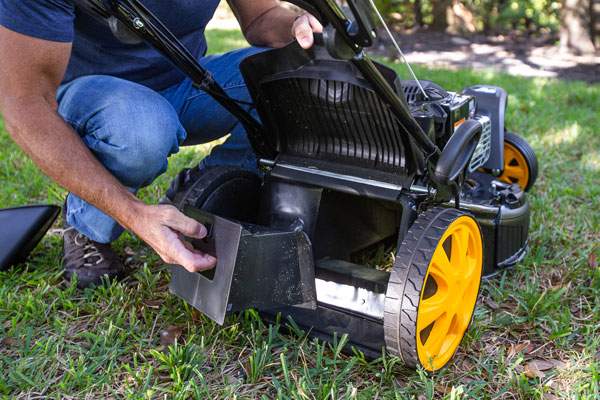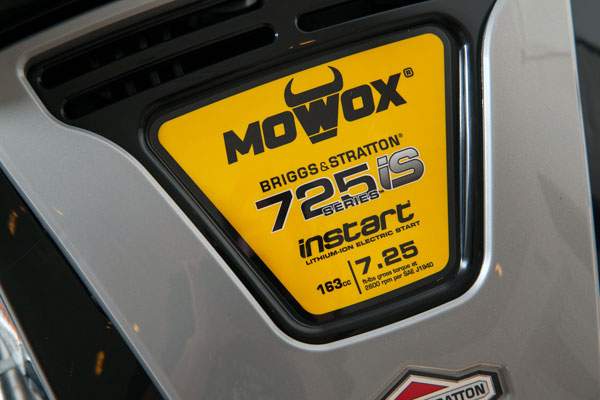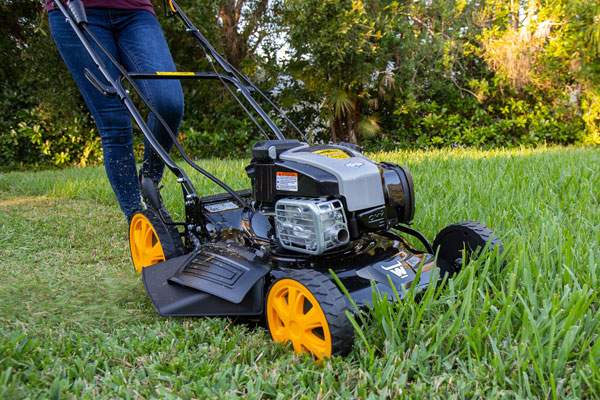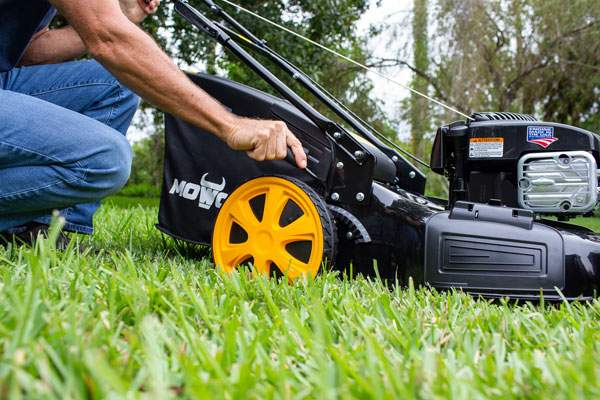FAQs Gas Powered Mowers
QUESTION: How often should I change the oil in my lawn mower’s engine?
ANSWER: When to change the oil
- Every 50 hours of operation or after every mowing season
- For a new lawn mower engine, you'll also need to change the oil after the first five hours of operation.
- Also check the oil every time you use it. Tough conditions such as wet grass, heavy dust, high temperatures and rough or hilly terrain, may increase the frequency of required oil changes.
QUESTION: How do I change the oil in my lawn mower?
ANSWER: Follow these steps to change your oil
- First, start by checking the oil level on your dipstick. The oil level of the dipstick should be between the two holes on the dipstick. Overfilling your engine can be just as bad as using old oil so make sure to check your dipstick level regularly.
- Next, identify how to drain the oil on your lawn mower. This can be done through the dipstick tube, drain plug or with an oil extractor tool. From there, it’s time to drain the oil:
- Run the lawn mower engine for 15 minutes to warm up the oil (imperative to remove all dirty debris from engine).
- Turn off the engine and disconnect the spark plug wire Drain the gas from the mower OR place a plastic sandwich bag over the gas tank and screw the cap on to prevent leaks.
- Insert the oil extractor tube and begin to pump the oil out of the engine.
- Once you have removed all the old oil and placed it in a container, set the container aside and after you complete the oil change, take the container to your nearest dealership where they can recycle your old oil.
Now, you can begin pouring in the clean, new oil.
- Check your operator’s manual to determine which oil is best for your engine.
- Once you finish pouring in the new oil, insert the dipstick in the tube and check to make sure the oil is at the correct level.
- When the oil is at the correct level, screw on the dipstick cap, put in new fuel if you removed it, and then reconnect the spark plug wire.
QUESTION: What could be causing the white/blue smoke from my mower's engine?
ANSWER: Blue or white smoke coming from your engine usually indicates burning oil, which can be caused by:
- Overfilling the crankcase with oil
- Incorrect oil grades
- Operating engine at greater than a 15 degree angle
- Inoperative crankcase breather
- Crankcase air leak
- Blown head gasket
- Worn cylinder and/or rings
- Turning/tilting the engine on its side for storage, oil change or any other reason
- Note: If the engine has to be tilted, ensure the spark plug is facing upwards to help prevent oil from escaping the crankcase.
- Other reasons for blue or white smoke from engines include:
- Exceeding the engine’s oil capacity shown on dipstick
- An obstruction in the breather tube (located behind the air filter)
- Damages to the cylinder/piston rings
QUESTION: Do I need to use fuel stabilizer?
ANSWER: Fuel stabilizers for gasoline are important to have for your seasonal gas that you use in your lawnmower and small engines.
- Unsure of what gas to put in your in your lawn mower? Use clean, fresh gasoline with a minimum octane rating of 87— the same gasoline you put in your car —and stabilize it throughout the season.
- This alone will ensure your lawn mower, snow blower, chainsaw, and string trimmer start quickly and run efficiently whenever you need it.
- While ethanol and flex fuel may be great, eco-friendly options for your car, avoid using it in your lawn mower.
- In particular, grade E15 fuel attracts moisture that separates from the ethanol. When this happens, a layer of water and alcohol is created at the bottom of your fuel tank that can severely damage your engine and will void your warranty.
TOPIC: Longevity Tips
Here are some tips to get the most out of your mower:
- Sharpen the blades once a year.
- Raise the blade if the grass has grown excessively tall between cuttings and walk more slowly than usual.
- Avoid mowing wet grass and clean the underside of the deck after use to remove grass clippings, leaf bits and other debris.
- Utilize a fuel stabilizer when storing gas throughout the season.
- Check the engine’s air filter after every two hours of use.
Check the engine’s oil after every five hours of use. - Clean the underside of the mower deck after each use.




